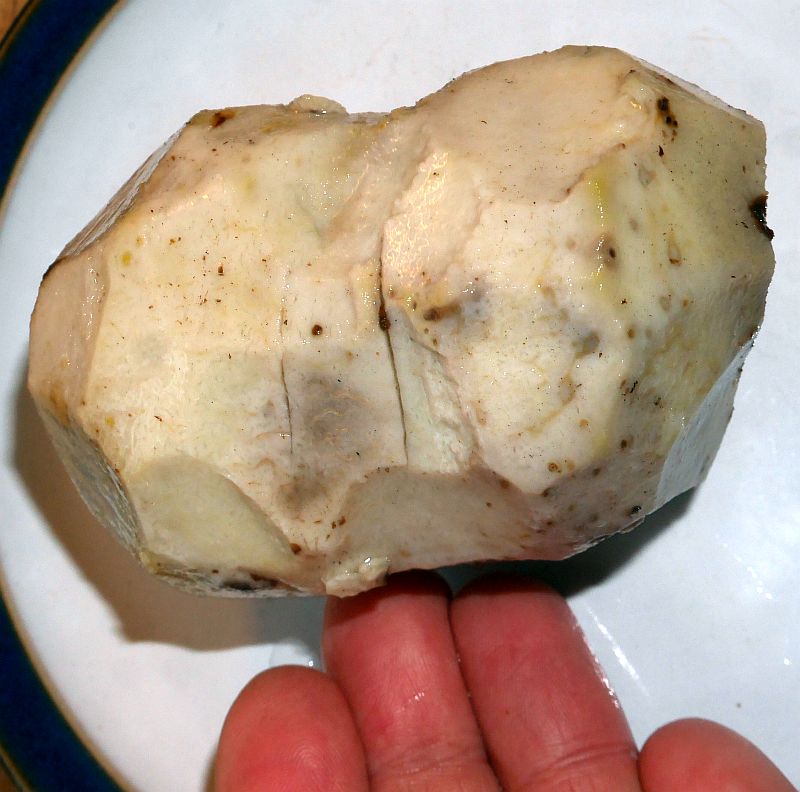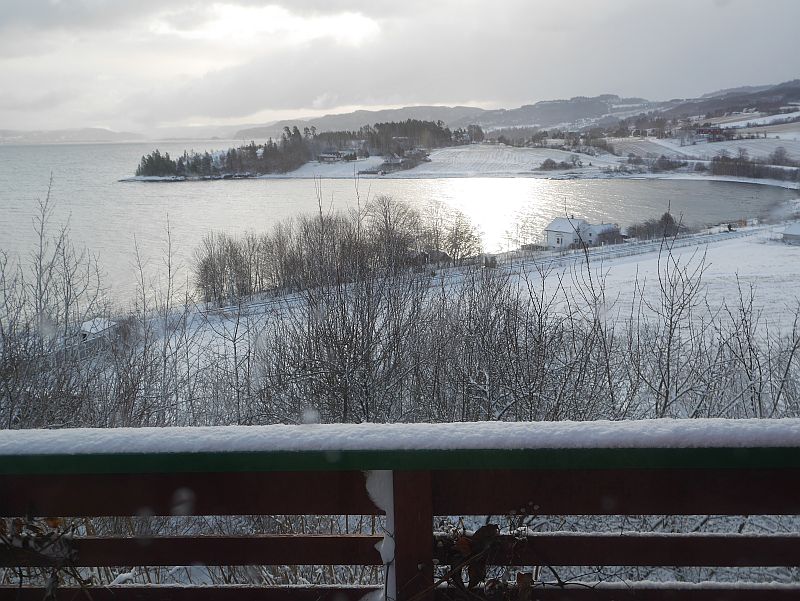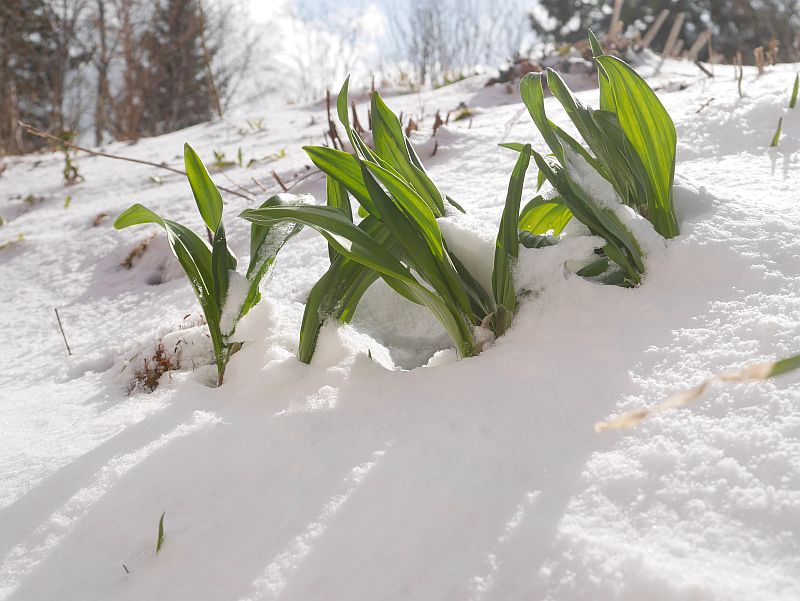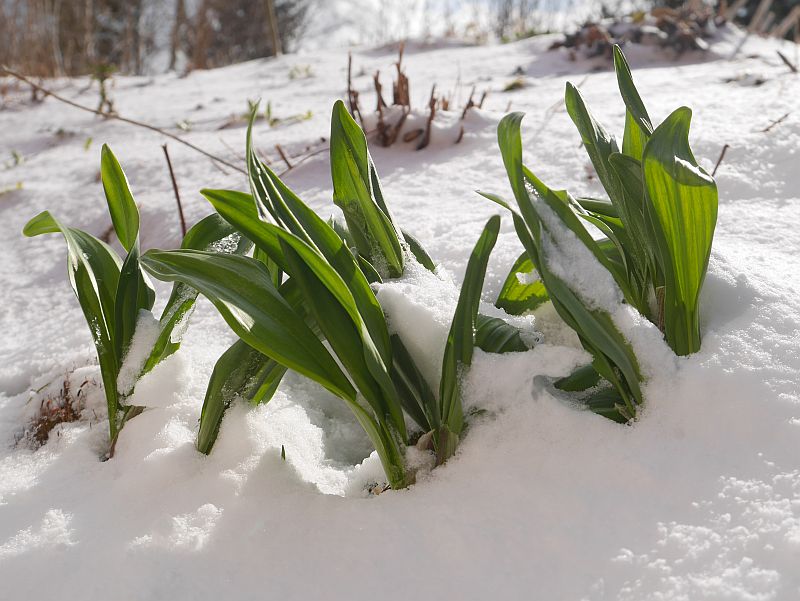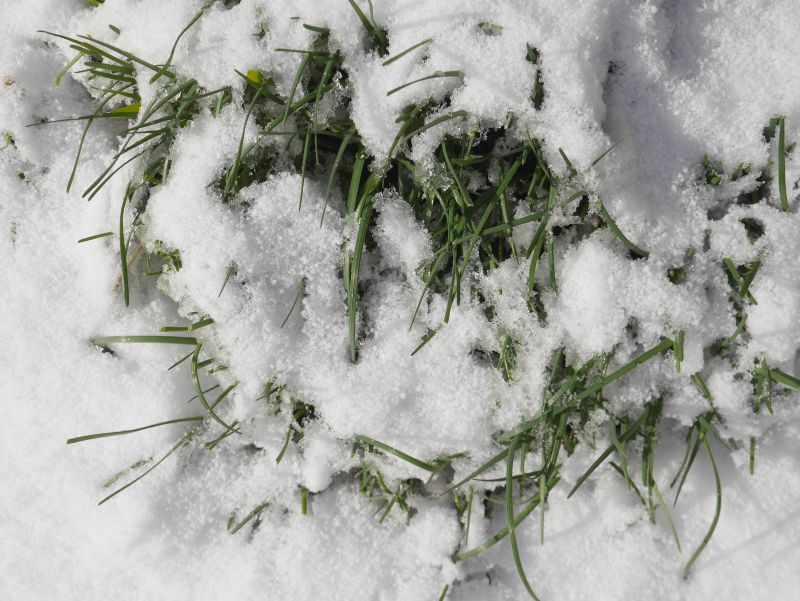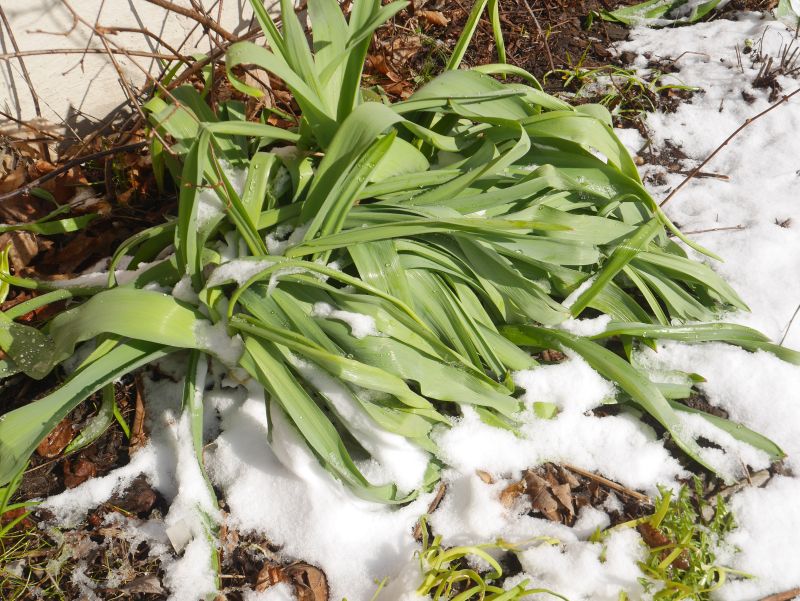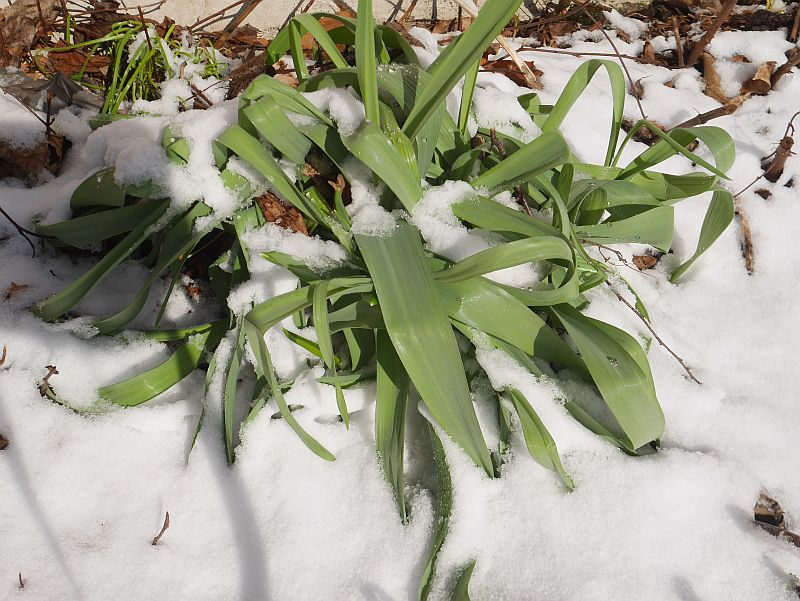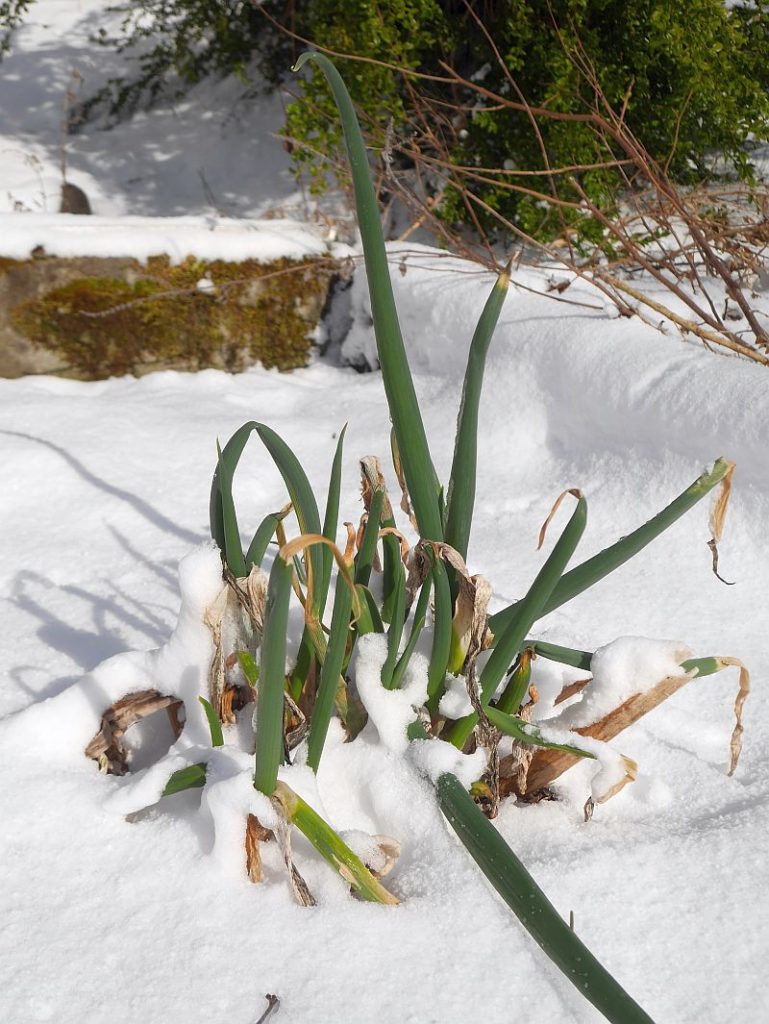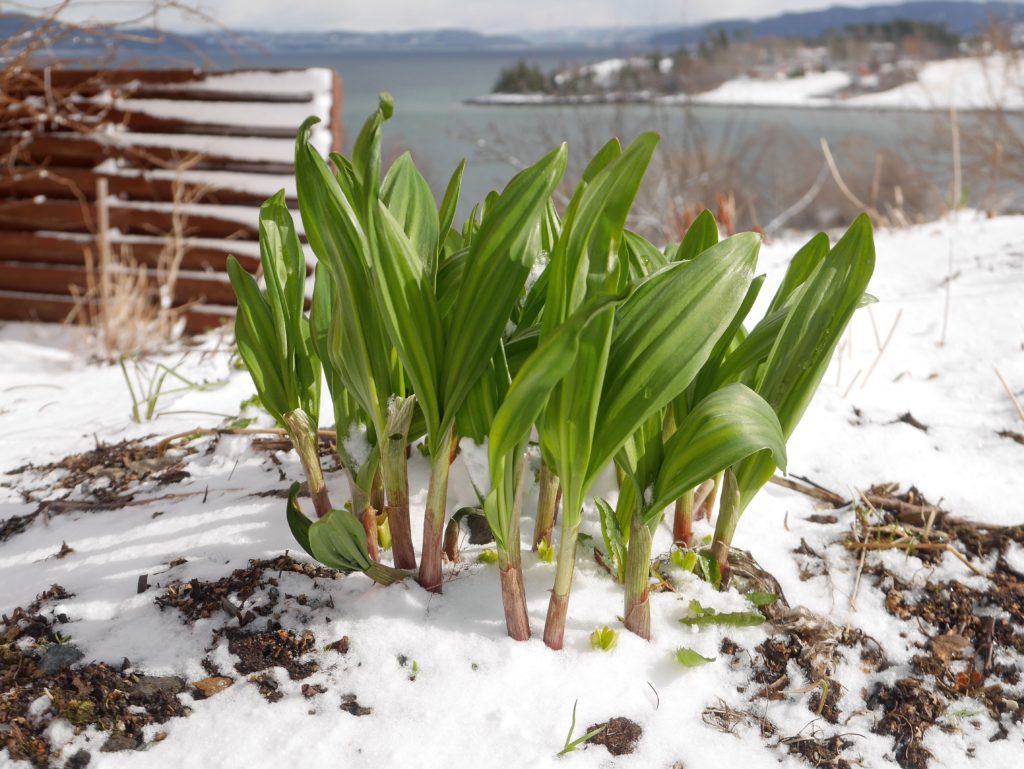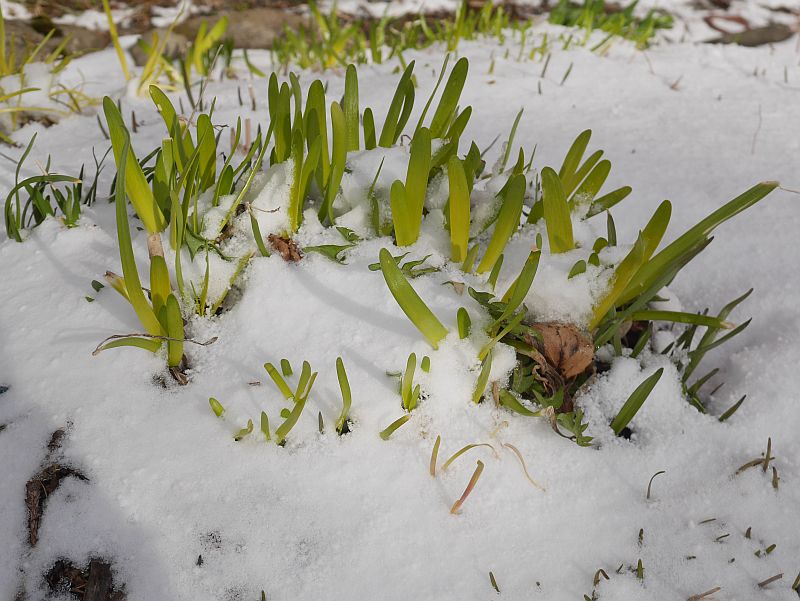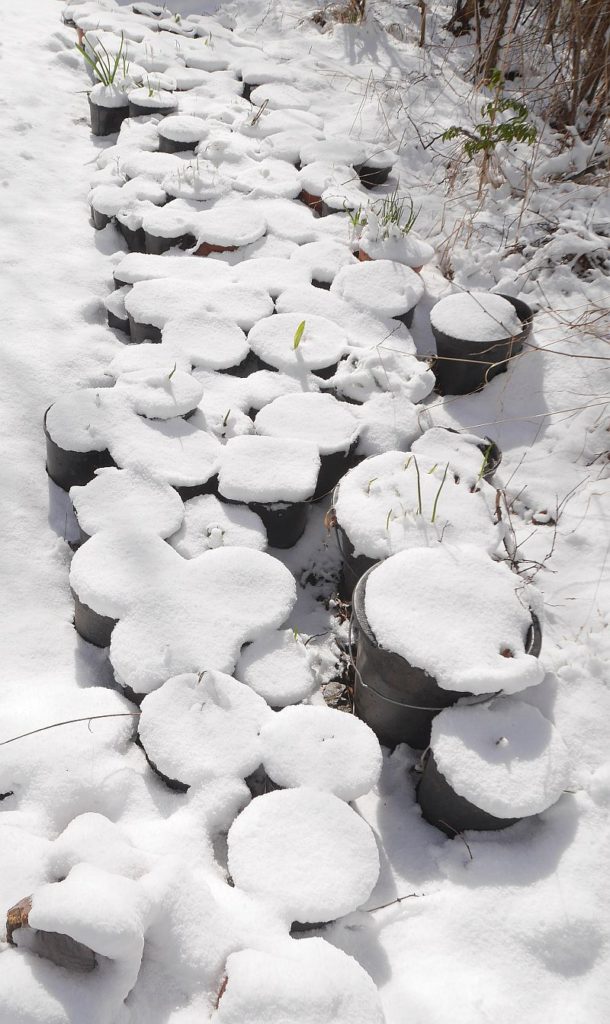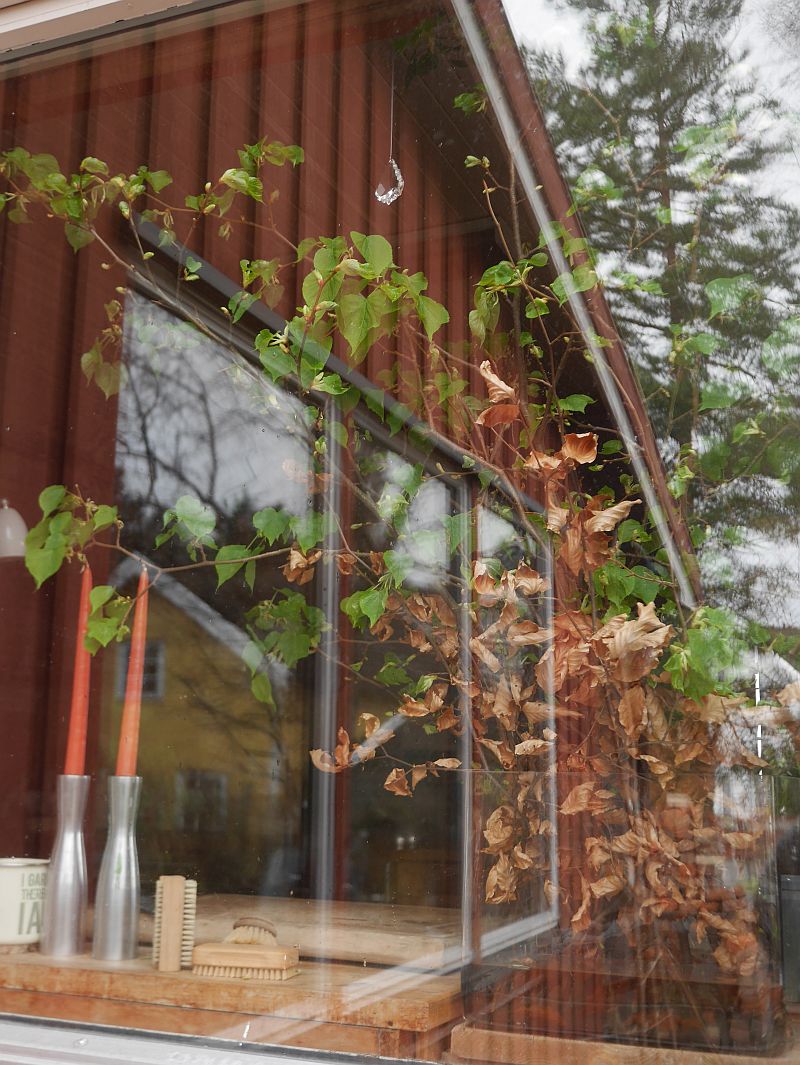For the second time a pair of coal tits (svartmeis) have taken up residency in the garden. It’s not often I see them as they don’t come to the bird feeder. I only know of their presence from the male’s song which I’ve heard regularly since January. They are probably building a nest now possibly in a bird box as there aren’t any natural tree holes although they also build in holes at ground level. 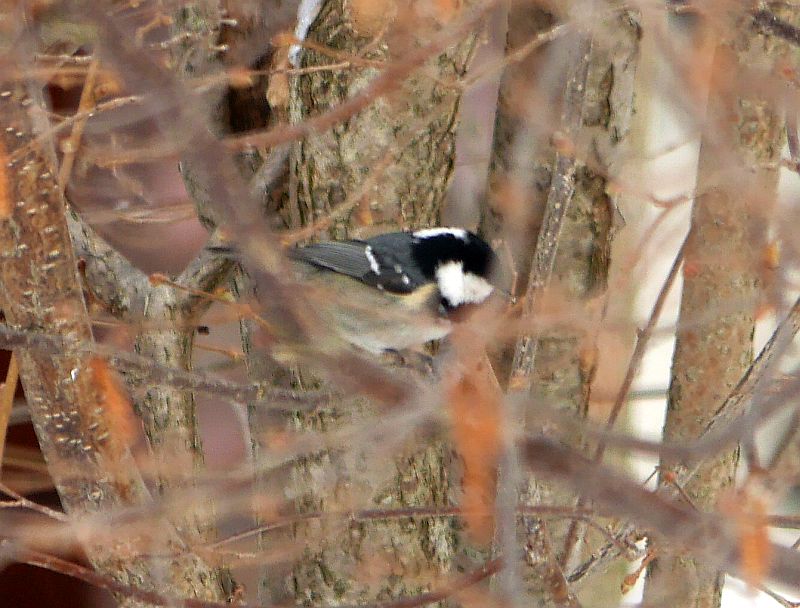
Monthly Archives: April 2020
Dandies, habbies, sand leeks, sorrel and sweet cicely
7th April 2020 perennial greens used in a quinoa stir-fry:
Taraxacum officinale (dandelion / løvetann)
Allium scorodoprasum (sand leeks / bendelløk) (these grow semi-wild in seaweed on my sea kale bed)
Hablitzia tamnoides (Caucasian spinach / stjernemelde)
Myrrhis odorata (sweet cicely / spansk kjørvel)
Rumex acetosa “Belleville” (sorrel / engsyre)
Blackbird
Nice to wake up to a blackbird (svarttrost)in full song this morning. The first week in April is pretty much always when they start singing here!
A great tit (kjøttmeis) can also be heard. There are at least 3 territories in the garden and surrounding gardens this year.
Also this week, curlews (storspove) have started singing in the bay and highlight of the week was a goldfinch (stillits) singing in the garden. It moved around and sang in the 3 different places…sadly, it didn’t return yesterday. It seems that goldfinches have started colonising this area as a breeding bird with single breeding records the last 3 years.
Garden produce 6th April 2020
Continuing my series of photographing my veggies, all from the garden this time. Just three this time, added to a pea soup.
Allium nutans (or hybrid) (Siberian nodding onion)
Hablitzia tamnoides (Caucasian spinach, stjernemelde)
Rumex patientia (patience dock, hagesyre)
Ken Fern’s Plants for a Future database
Somebody wrote to me recently and told me that the guy who originally compiled the Plants for a Future database back in the 80s and early 90s, Ken Fern, and kindly sent me the entire database on 10 of those old diskettes (pre-Internet days) for free has his own site:
http://plantsforafuture.theferns.info
Not only that, but he has launched a tropical database with so far 11,906 species (reachable from the above link or directly to http://tropical.theferns.info
The temperate database is also updated and is at
http://temperate.theferns.info
Consider donating as I just did!
Unless I’m corrected, it seems that these are now the links to use!
Please share.
An alternative spring harvest
Somebody asked me the other day if I use floating mulch (fiberduk / agryl) to be able to harvest all these greens so early. No, no and again no….this is one of the biggest benefits of perennial vegetables….it is totally natural, no microplastics are released into the environment, no oil is needed to plough the fields, significantly less migrant labour is needed and little or no fertiliser and water is needed, it is almost totally free once established and can yield year after year! So, whilst large areas of farmland in the northern hemisphere are being covered by plastic mulches to bring on annual crops for the market earlier, I’d just like to point out that there’s an alternative better way!
So, here are the plants that I harvested for yesterday’s delicious green pasta sauce:
Armoracia rusticana shoots (horseradish / pepperrot)
Myrrhis odorata (sweet cicely / spansk kjørvel)
Houttuynia cordata “Chinese Market” (shoots and rhizomes from the cellar; this cultivar is significantly larger than other Houttuynia I’ve grown) (Fish herb, Himalayan water creeper)
Allium senescens x nutans (hybrid Siberian onions)
Laurus nobilis (bay / laurbær)
Brassica oleracea (perennial kales)
Crambe maritima (sea kale / strandkål)
Taraxacum officinale (dandelion / løvetann)
Allium x proliferum (walking onion / luftløk)
Hablitzia tamnoides (Caucasian spinach / stjernemelde)
Dystaenia takesimana (giant Ulleung celery, seombadi)
Oenanthe javanica (seri)
Polymnia edulis (yacon) (second picture)
plus garlic and chili
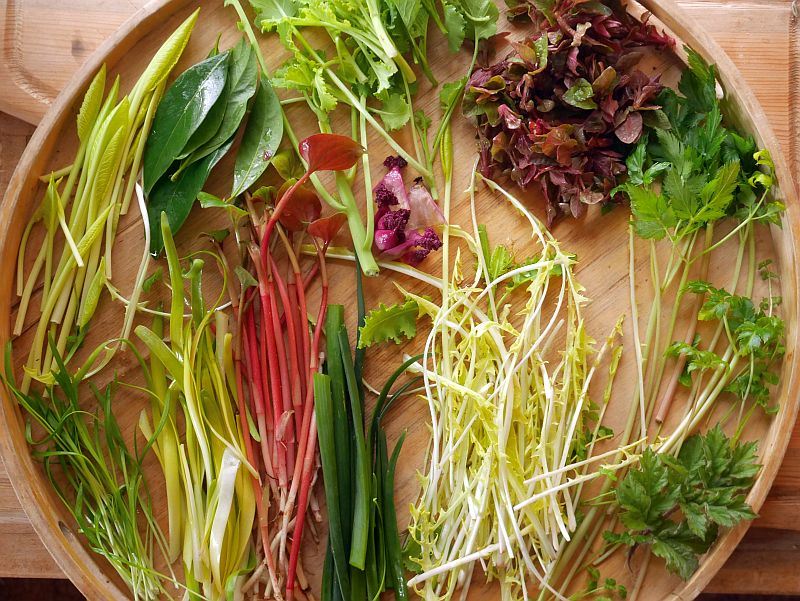
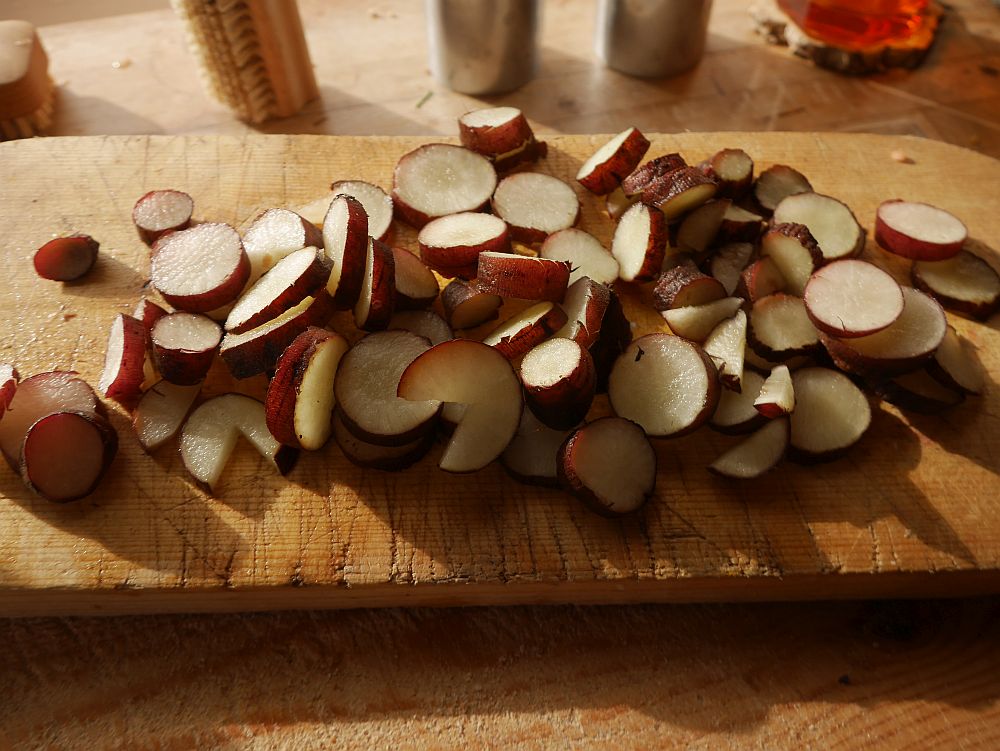
Taro harvest
Taro (Colocasia esculenta) ia an important root crop in tropical and subtropical climates, but is also surprisingly hardy so that I can have it out in the garden the whole summer with temperatures close to zero. I’ve grown Taro as an attractive edible house plant for over 15 years and I harvest the edible corms about once a year! 
Yesterday, we cooked and fried in olive oil the largest corm and served with salt and chili:
Some years we also eat the leaves, and my Nepalese friends taught me how to prepare them here: https://www.edimentals.com/blog/?p=6593
See more taro pictures from Malvik here: https://www.edimentals.com/blog/?p=5738
It’s sadly less easy to grow it as a house plant these days as greenflies have taken a taste for it :(
Onions in the snow
Several Alliums are extremely hardy and can stand green all winter even when exposed to temperatures under -20C. Similarly, young leaves of species that start to sprout in early spring as soon as the frost disappears near the surface have no problem with snow and frosts. Here are a few after yesterday’s snowfall!
Habby in the snow
I think that we ate Hablitzia (fondly known as habby) shoots every day this March as the mild winter and largely unfrozen soil brought them on about a month earlier than normal, even the plants in the shadiest parts of the garden, where frozen soil normally lingers longer, have been harvested regularly this year. They’ve been used in all sorts of dishes from pizza to quiche to salads to a soba dish, stir fry in green pasta sauce, in curry, in vegetable patties and baccalao. Tasty, adaptable and nutritious! We’ve had 3 or 4 heavy snow falls which have melted again in a few days but the Caucasian spinach (stjernemelde or star orach in Norwegian) is hardly affected.
HABBY EASTER TO ALL MY FOLLOWERS :)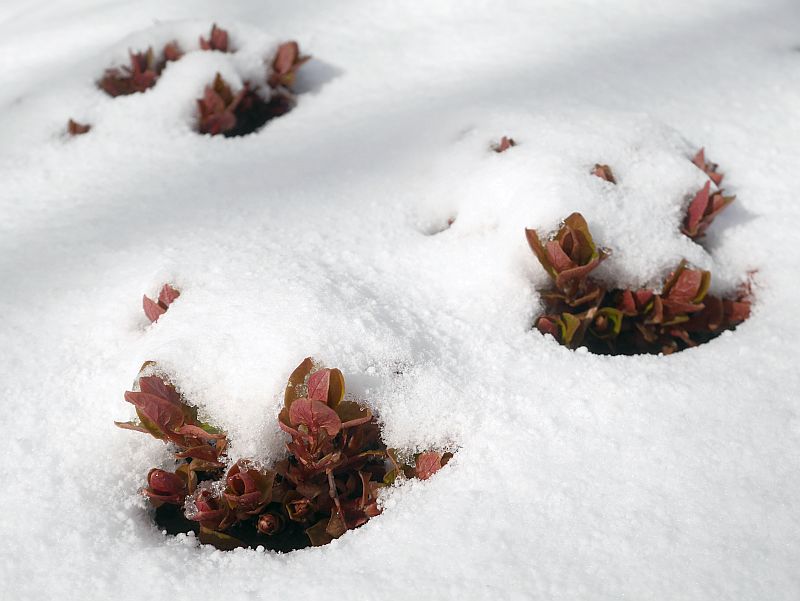
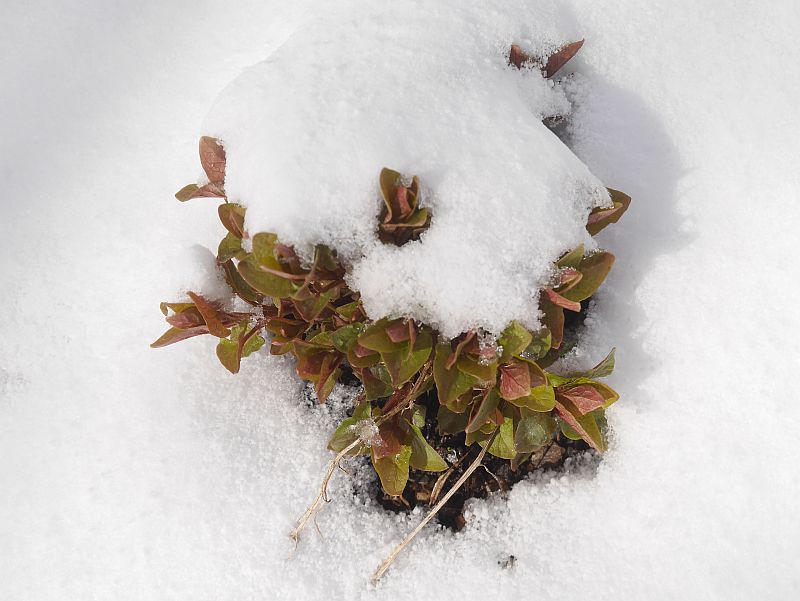
Easter decorations
Easter is a big holiday here and it’s a tradition to decorate your home with various decorations (påskepynt) and the cheapest decoration is just to bring in some twigs that leaf out bringing a bit of spring atmosphere into homes. This is even more important this year when most people are at home! I do this every year too, but here the emphasis is on edible tree leaves and two of the best are lime (Tilia cordata) and beech (Fagus sylvaticus)! So here’s what this year’s looks like:
Last night’s 100% wholegrain sourdough barley, rye and oat pizza with masses of Hablitzia shoots was eaten with delicious lime leaves:


